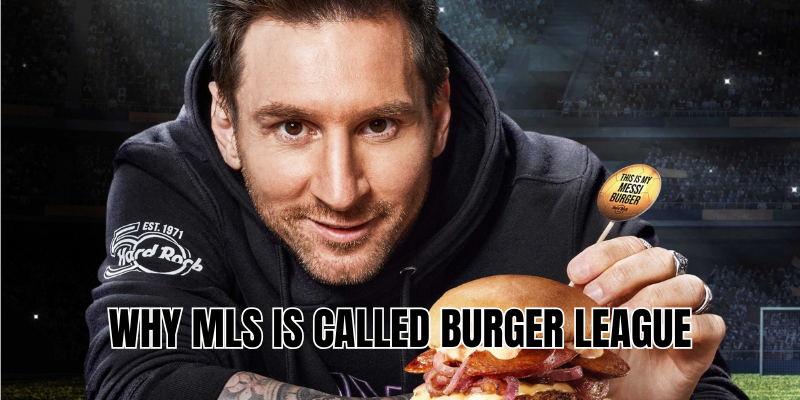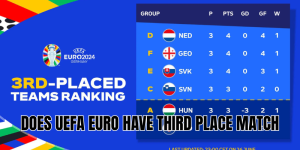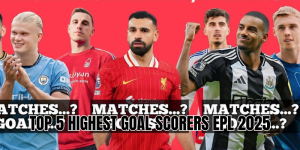The phrase why MLS is called Burger League pops up often among critics and soccer fans when discussing Major League Soccer. Immediately, it sounds like an insult: a way to say “it’s not serious”, “it’s casual”, or “it’s local burger joint stuff compared to the ‘real’ leagues.” But the truth is more nuanced. Below, CanLinkCup will dig into the origins, meaning, criticism, defense, and evolution of this label—what it, what’s fair, and where the league stands today.
What “Burger League” Means

“Burger League” is a slang/derogatory term used by some soccer fans—especially outside the U.S.—to dismiss MLS as being of inferior quality. It implies the league is fast food: mass-produced, cheap, casual, and lacking depth. Key ideas associated with it:
- The implication that many players in MLS are past their prime or are not top-tier stars
- That the standard of play, tactics, and competition is lower than major European or South American leagues
- That MLS is a “retirement” destination for aging stars rather than a place where young top talent pushes boundaries
Urban Dictionary and Wiktionary both define “Burger League” as a slang term for MLS. It carries humor, but also a critique.
Origins of the Term

To understand why MLS is called Burger League, we need to look at how and when itgan:
- MLS is relatively young in global soccer terms. It was founded in 1993 (but play started in 1996).
- Early seasons saw many “experiments” that European fans found alien or lower standard: shootouts instead of draws, weird uniform styles, artificial turf, differing rules compared to FIFA norms. These gave ammunition to critics saying the league was not “serious” or traditional.
- Many stars who joined MLS were in the later stages of their careers—Beckham, Henry, Zlatan. While they contributed prestige, their presenceinforced the narrative that MLS is not where players come to grow or peak, but to wind down.
- Comparisons with Europe/South America—rich history, massive fanbases, tradition, high tactical levels—accentuated perceived gaps.
These factors combined to create cultural and media momentum for the “Burger League” label.
Criticism Behind the Label: What Grievances Are Valid?

While some use the term just to provoke or mock, there are legitimate criticisms that feed into it. Here are some of them, plus where they’ve been changing:
| Criticism | What people mean by it | How MLS addresses or fails to address it |
| Player quality / star power | MLS has fewer players in their peak vs Europe, more veterans and fewer young world-class entrants | MLS has introduced the Designated Player Rule (“Beckham Rule”) to allow star signings. Arrival of people like Messi, Suarez is helping shift perception. |
| Tactics / competitiveness | Less tactical nuance, slower development of academy pipelines, some mismatches vs top European/South American results | MLS has expanded academies, youth development, and many teams increasing physical/tactical metrics (e.g. sprinting, pressing). |
| Financial constraints & salary cap | MLSits player salaries, clubs don’t spend like Europe, which affects recruiting and depth | The single-entity structure / salary cap remains in place; it’s a double-edged sword: keeps financial stability and parity, but limits the ability to compete globally. |
| Perception as a “retirement league” | Many foreign stars arrive past their prime, which reinforces the notion that MLS isn’t for peak performance | While true for many big names, more recent signings (and younger talent rising) are helping shift that narrative. MLS is also attracting stars not just for retirement but for challenge, exposure, and new markets. |
So, while “Burger League” is partly caricature, it’s rooted in some truths about MLS’s early structure, financial model, and global positioning.
Evolution: Is MLS Shedding the Burger League Tag?
In recent years, there’s been a strong counterargument: MLS is growing, improving, and narrowing the gap. Here’s how:
- Star Signings & Global Attention: Lionel Messi joining Inter Miami made MLS unavoidable in global soccer conversations. It isn’t a joke when a player of his caliber chooses MLS. It signals prestige, ambition, and commercial weight.
- Increasing competitiveness: Matches are becoming more tactical, physical metrics (like high-speed runs and sprints) are rising, coaches importing modern styles, etc.
- Fan growth, infrastructure, and media: Attendance has increased in many stadiums; more soccer-specific stadiums; better media deals; streaming platforms bringing in wider audience. MLS Season Pass numbers are up.
- Younger talent exporting abroad: Some homegrown players are now making moves to Europe earlier. That signals that the league is building strong academies and producing talent, not just importing it.
Still, the perception lag is real. Many fans (especially outside North America) still see MLS as second-tier vs the established European leagues. But every year, many of those arguments are being forced to change or be updated.
Does Labeling MLS “Burger League” Hurt Its Growth?
Labels and perceptions matter, especially in a global sport. Using “Burger League” has consequences:
- It can discourage young talent from seeing MLS as a place to develop (if they believe it’s “just for older players”)
- Can affect sponsorship, media coverage, investment if people believe it’s inferior
- Might reduce prestige, which influences decisions by foreign stars considering MLS as destination
On the flip side, the label can galvanize action. Criticism sometimes pushes MLS to push back: improve player development, tighten competition, improve facilities, sign big names, negotiate better media deals.
CanLinkCup’s Perspective: Is the Label Still Fair?
In my view, “Burger League” is increasingly outdated—and unfair as a catch-all description. Here’s what I believe:
- It was somewhat fair in the league’s early decades, when many of its structures still lagged tradition.
- But today, MLS is transforming fast. There are still gaps vs top European leagues in depth, in international performance, and in being a top destination for players in their prime—but the progress is clear.
- Usage of the term now often reveals more about the speaker’s bias than the current reality: people who respect European leagues, or fans who haven’t followed MLS closely, tend to overemphasize weaknesses and ignore growth.
Comparison: MLS vs “Top” Leagues (Current Snapshot)
To put things in perspective, here are a few metrics where MLS is doing well vs where it still trails:
- Physical intensity: MLS is narrowing the gap in metrics like high-speed runs and sprints.
- Financial strength & salary: MLS can’t match the biggest clubs in Europe in terms of sheer budget or wage bills, but the Designated Player rule, increasing sponsorships and investments are allowing select marquee names.
- Fan engagement & infrastructure: Stadiums, attendance, merchandise, local support have all grown. The MLS expansion is strong, showing demand.
- International reputation & competitive results: MLS teams still lag in CONCACAF Champions Cup and globally against elite teams. But tournament results are improving slowly. Reputation takes time.
What Needs to Happen for MLS to Fully Escape the Burger League Tag
Here are steps that could help MLS not just shake the label, but be consistently ranked among serious top-tier leagues:
- Maintain growth of youth academies so more homegrown talent breaks through and stays, rather than relying heavily on aging international stars.
- Improve competitive depth—more teams able to challenge at a high level, fewer blowout games, more consistency.
- Refine rules/structures (salary cap, player movement, roster rules) to allow more flexibility without sacrificing financial sustainability.
- Increase international success—MLS sides performing well in continental tournaments will shift perceptions.
- Boost media and global visibility—strong broadcasts, streaming, expanding viewership abroad.
Conclusion
Why MLS is called Burger League is rooted in real critiques—youth development, financial constraints, star player timing, and historical perception. But CanLinkCup believes that label is losing its grip. MLS is growing fast, improving on many fronts, and starting to prove that it’s more than just a stepping stone or a destination for players winding down.
If you’re a fan, keeping up with MLS now means witnessing its rise, not just its shortcomings. Whether you want match results, young stars, comparisons, or stats—stay tuned, because MLS is continuing to evolve.
Want to dive deeper? Check out recent MLS vs European match analyses, player-by-player stats, and the latest marquee signings to see firsthand how MLS is pushing back against the “Burger League” tag.







